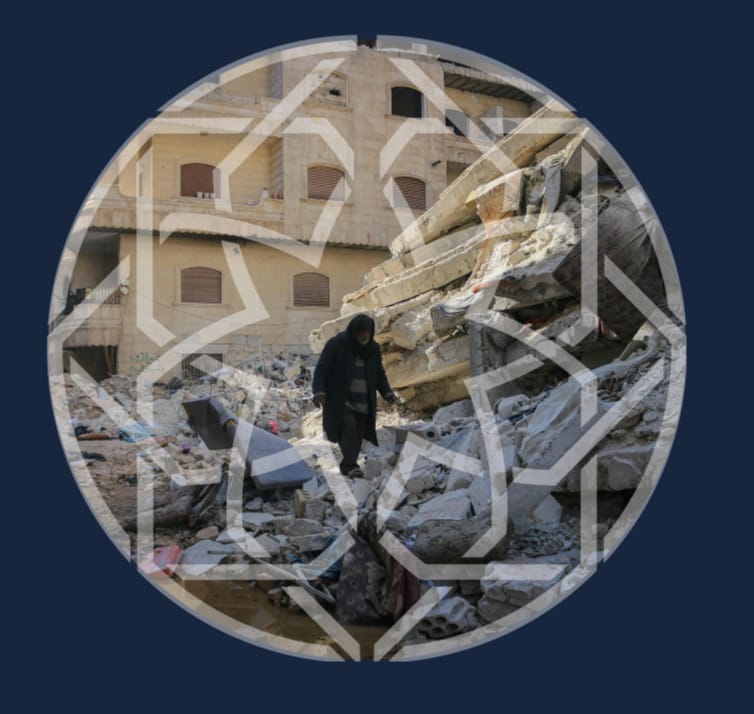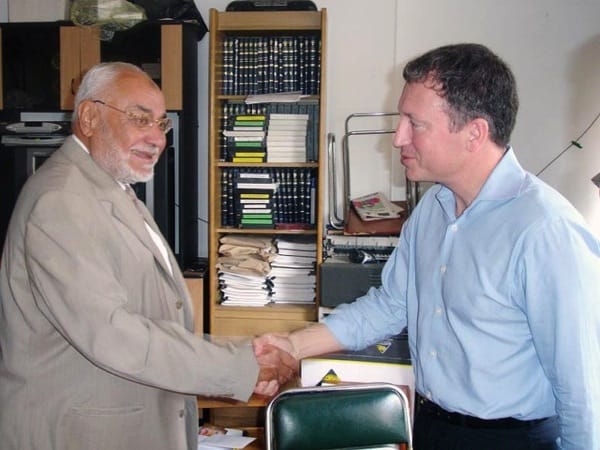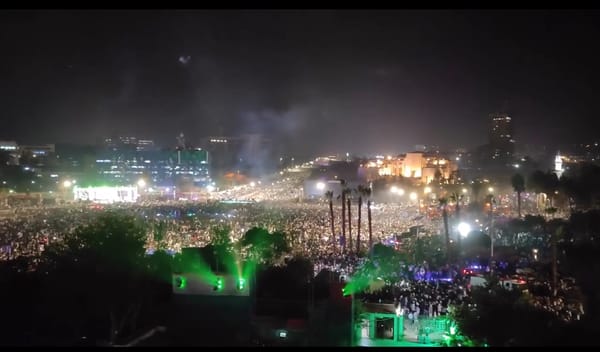State and Regime Violence

I'm thrilled to announce the publication of POMEPS Studies 55: State and Regime Violence. Based on a POMEPS workshop jointly organized with Toby Dodge at LSE's Middle East Centre last fall, and edited and introduced by me, this collection brings together a diverse, top-notch group of scholars to examine the many faces of state violence in the Middle East. My introduction, reproduced here, lays out the intellectual, policy, ethical, and academic stakes of the intervention. Steven Heydemann then offers a useful framework for thinking about the different dimensions of violence, and then - in line with our recent book Making Sense of the Arab State – explains why we've chosen to focus on state and regime violence (and why those aren't the same thing).
The collection then features three absolutely fantastic papers about violence in Syria by some of the top scholars working on that critical case, building on and expanding their previous work: Reinoud Leenders and Ali Aljasem, Kevin Mazur, and Salwa Ismail. The collection then moves beyond Syria to consider facets of state violence in Beirut (Jeroen Gunning and Dima Smaira), Egypt (Alice Finden, Lujain El-Meligy), Israel/Palestine (Motasem Abuzaid), and Jordan (Francisco Mazzola). You can download the whole collection as a free open access PDF here, and read my introduction below. Enjoy!
Introduction: State and Regime Violence
In late 2008, Israel launched a massive air campaign against Gaza. In 2014, Israel did it again. In 2021, Israel did it again. In the intervening years, civilians in Gaza suffered under the slow violence of a comprehensive blockade which allowed in only enough food and supplies to maintain the bare necessities of life. In 2023, following the shocking October 7 Hamas incursion into southern Israel which killed some 1400 people, Israel unleashed an even more ferocious onslaught, cutting off power and water as it relentlessly bombarded a tiny area containing 2.2 million people and launching a devastating ground invasion which has killed at least 50,000 people and likely far more – a campaign so destructive that the International Court of Justice ruled that it plausibly met the legal criteria for genocide.
Gaza’s violence is only one small part of the broader panoply of violence across the Middle East. As Lujain al-Meligy reminds us in her contribution to this essay, there are profound continuities from the colonial era through the construction of the modern state system. Laura Robson, in her sweeping 2020 book The Politics of Mass Violence in the Middle East, shows how direct and indirect violence has structured the politics, institutions and societies of much of the region.[1] Colonial violence determined the final borders and governance of Syria, Iraq and Palestine in the Levant as thoroughly as Italian genocide shaped modern Libya and French violence shaped North African states. Algeria suffered brutal wars of the 1950s and the 1990s. Lebanon was repeatedly torn apart by civil war in the 1970s and 1980s and subjected to multiple Israel attacks from 1978 and 1982 through 2006 and into 2023. Iraq and Iran fought an eight-year war with massive casualties and societal mobilization. Iraq brutally repressed its Shi’ites and Kurds in the aftermath of Iraq’s 1991 war with the United States. The American invasion of Iraq in 2003 led to a decade of insurgency against occupation. Palestinians suffered mass dispossession at the hands of Israel in 1948 and 1967 and fought large scale political and violent challenges in the 1980s and 2000s. Brutal wars have consumed Libya, Sudan, Syria and Yemen over the last decade.
Violence, as Steven Heydemann explores in this collection, takes many forms, is inflicted by many different types of actors, and unfolds from the global level to the highly local. This collection focuses on one of those dimensions: violence originating with regimes and states. In September 2024, POMEPS convened a workshop in partnership with Toby Dodge at the Middle East Center at the London School of Economics which brought together a dynamic set of scholars across academic generations, methodologies, and empirical research focus. We are delighted to publish papers from that workshop here.
The study of violence in the Middle East has long been caught between dueling imperatives. On the one hand, the vast knowledge production industry surrounding terrorism and counterinsurgency has ensured the regular, often overwhelming, flow of academic and para-academic publications on that sort of violence. Such research, which typically seeks to inform more effective counterterrorism and counterinsurgency policies, risks exaggerating the prevalence of radicalism and non-state actors – whether Islamist or jihadist groups such as al-Qaeda and the Islamic State or groups labeled Iranian proxies – while ignoring, downplaying, or even justifying the violence committed by states and regimes allied to the United States. Human rights-oriented policy research is far more attentive to state and regime violence, as well as to the violence inflicted by the United States and American allies.
From the other direction, many more critical scholars shy away from centering violence for fear of sensationalizing and exoticizing the Middle East and reproducing Orientalist cliches about the supposed inherent violence of Islam or Arab culture. That laudable goal can lead, though, to minimizing what is in fact a pervasive and deeply structuring feature of regional politics. The relentless violence and cruelty of Asad’s Syria or Saddam’s Iraq or the Israeli occupation of Palestine are not Orientalist tropes – they are fundamental realities which must be confronted directly for both analytical and ethical reasons. This collection, in line with emerging trends across multiple disciplines, seeks to rigorously study violence from a transregional and theoretically informed standpoint – neither instrumentalizing research to support American foreign policy goals nor exoticizing violence as something uniquely Middle Eastern. Such approaches analyze violence in the region through the same theoretical lenses that are used to make sense of violence not only in other postcolonial contexts but also within Western democracies (I have been inspired by the ‘warscapes’ literature and Achilles Mbembe’s Necropolitics, though these are not prominent themes in this collection).[2]
State violence does not always get the attention it deserves. Insurgents attract far more attention, whether due to the policy imperatives of the US government, the sensational nature of their violence, or entrenched stereotypes and assumptions. But in Syria, Uğur Ümit Üngör argues, the regime was responsible for some 90% of civilian deaths compared to some 3% inflicted by the Islamic State.[3] Most of the violence related in the opening of this paper came at the hands of states, whether in international war or in the name of regime preservation. Across the region (as globally), states have been responsible for unspeakable levels and forms of violence against their citizens – torture, abuse, ethnic cleansing and more. That violence was often at the core of regime survival strategies, woven into the very fabric of governance. At other times – from Syria to Bahrain, Egypt, and Libya – the violence came in response to unexpected challenges, when popular uprisings or nascent insurgency broke through the carefully cultivated aura of regime impunity and were met with extreme violence. That violence was carried out sometimes by the uniformed military, but often by paramilitaries and unmarked agents of violence such as Syria’s shabiha and Egypt’s baltagiyya.[4]
Syria is the focus of one cluster of essays in this collection. That’s for good reason: Syria represented one of the most extreme and brutal cases of regime violence in recent history, one whose full contours and scope are only now coming fully into focus. Regime choices about violence in those early days play a key role in shaping political opportunity structures for actors on all sides. The papers by Kevin Mazur and by Reinoud Leenders and Ali Aljasem each revisit the critical first year of the uprising, detailing both the methods and the drivers of the regime’s resort to extreme violence. The extremity of that violence, as Salwa Ismail makes clear, had deeper purposes than simply killing or defeating particular challengers. Extreme violence, horror, and torture changes who and what people are, their relationship with their self and with society in ways deeper than simple behavior.
Violence can be slow and structural rather than direct. The blockade and starvation of Gaza, like the sanctions and blockades on Iraq in the 1990s or Yemen in the 2010s, took a profound human toll through the spread of preventable disease, starvation and deprivation, and denial of access to clean water and medical care.[5] Even without a single bomb being dropped or trigger being pulled – though that is rarely the case – sanctions and blockades create the structural conditions for the death and debilitation of humans that must be tractable in any theoretical account of violence. In March 2017, the British-American charity Save the Children published a devastating report on the psychological traumas of Syria’s children after six years of war.[6] Three million children, it reported, had by that point known nothing but war, dislocation, and loss. Surveying some 450 children from across Syria’s provinces, the report found a pattern of bedwetting, self-harm, social withdrawal and suicide attempts. Save the Children warned of a “broken generation, lost to trauma and extreme stress.” The children of Gaza, Yemen, and so many more countries afflicted with endemic violence suffer the same.
Those structural effects include environmental impacts which can take a toll over generations, as argued in recent work by Munira Khayyat and Kali Rubaii.[7] They also include the enforcement of borders, which dehumanizes would-be migrants and too often leads to their unremarked deaths in attempted crossing of the Mediterranean. Israel’s occupation of the West Bank, as Motasem Abuzaid dissects in his paper, can be understood as such an infliction of symbolic and structural violence. The imposition of forms of governance rooted implicitly and explicitly in the inferiority of the governed and the denial of their right to self-determination is symbolic but significant – and then directly shapes the possibilities for the imposition of checkpoints, territorial division, unequal access to water, and more.
Violence also pervades policing and the routine interaction of the state and its citizenry, as Alice Finden and Francisco Mazzola each make clear in their papers. There is a growing literature detailing torture and other forms of violence of prisons: in Syria[8]; Morocco[9], Egypt[10], Palestine[11] and Iran[12] among many others; the Bahrain Independent Commission of Inquiry documenting Bahrain’s repression of the 2011 uprising[13] and Tunisia’s Truth and Dignity Commission reports. All detail the depth and depravity of the violence inflicted on human bodies and minds in those settings of horror. That violence, pervasive and deep, can easily be missed amidst the wars and interventions, but as Salwa Ismail’s The Rule of Violence (like her essay in this collection) reminds us, was always central to the very nature of governance under Ba’athist Syria and many other regimes in the region.[14]
While this collection focuses on state and regime violence, different forms of violence take hold at the societal level where the state’s writ lapses, as Jeroen Gunning and Dima Smaira demonstrate in the case of Beirut’s southern suburbs. Their paper brings in Bourdieu’s notions of symbolic violence and capital in ways that even more broadly expand conceptualizations of violence – perhaps, based on our workshop discussions, farther than some would be comfortable with. Dehumanization and the denial of the right of others to self-actualization has serious psychological effects which are difficult to distinguish from the trauma inflicted by more direct forms of physical violence.
The papers and discussions in the workshop explore a wide range of pathways for theoretical and empirical research on state and regime violence. We look forward to continuing those discussions across theoretical and methodological divides, historical periods, and comparative cases both within and across regions.
References:
[1] Laura Robson, The Politics of Mass Violence in the Middle East (Oxford University Press, 2020).
[2] Key works include Carolyn Nordstrom, A Different Kind of War Story (Philadelphia, PA: University of Pennsylvania Press, 1997); Carolyn Nordstrom, Shadows of War: Violence, Power, and International Profiteering in the Twenty-First Century (Berkeley: University of California Press, 2004); Stephen Lubkemann, Culture in Chaos: An Anthropology of the Social Condition of War (University of Chicago Press, 2007); Achilles Mbembe, Necropolitics (Duke University Press, 2019); Marc Lynch, Jeroen Gunning and Morten Valbjørn, “Changing Warscapes, Changing Islamists: Religion, Organization, Strategic Context and New Approaches to Armed Islamist Insurgencies,” Studies in Conflict and Terrorism (Early View, 2024).
[3] Uğur Ümit Üngör, “How the Syrian Conflict Shaped Mass Violence Research,” Syrian Studies 17 (2025).
[4] Uğur Ümit Üngör, Paramilitarism: Mass Violence in the Shadow of the State (Oxford University Press, 2020). For a dicusssion of different forms of state violence, see Holger Albrecht, Kevin Koehler, Devorah Manekin and Ora Szekely, “Militaries, Militias, and Violence,” in Marc Lynch, Jillian Schwedler and Sean Yom, eds., The Political Science of the Middle East (Oxford U niversity Press, 2022).
[5] Joy Gordon, Invisible War: The United States and the Iraq Sanctions (Harvard University Press, 2010).
[6] Save the Children, Invisible Wounds (2017), available at https://resourcecentre.savethechildren.net/document/invisible-wounds-impact-six-years-war-mental-health-syrias-children/
[7] Munira Khayyat, Landscapes of War (Stanford University Press, 2022); Kali Rubaii, “Birth Defects and the Toxic Legacies of War in Iraq,” Middle East Report 296 (2020).
[8] Jaber Baker and Ugur Ümit Üngör, Syrian Gulag: Inside Asad’s Prison System (IB Tauris, 2023).
[9] Brahim El Guabli, Moroccan Other-Archives: History and Citizenship after State Violence (Stanford University Press, 2023).
[10] Mathias Ghyoot, Brothers Behind Bars: A History of the Muslim Brotherhood from the Palestine War to Egypt’s Prisons (Oxford University Press, 2025).
[11] Stephanie Latte Abdullah, A History of Confinement in Palestine: The Prison Web (Palgrave, 2022).
[12] Golnar Nikpour, The Incarcerated Modern: Prisons and Public Life in Iran (Stanford University Press, 2024); for an earlier influential analysis, see Ervand Abrahamian, Tortured Confessions: Prisons and Public Confessions in Modern Iran (University of California Press, 1999).
[13] The Bahrain Independent Commission of Inquiry report can be downloaded here: https://www.bici.org.bh/
[14] Salwa Ismail, The Rule of Violence: Subjectivity, Memory, and Government in Syria (Cambridge University Press, 2018).
Abu Aardvark's MENA Academy features book review essays and podcasts, roundups of new academic publications, and my commentary and analysis of Middle East politics and the academy.



